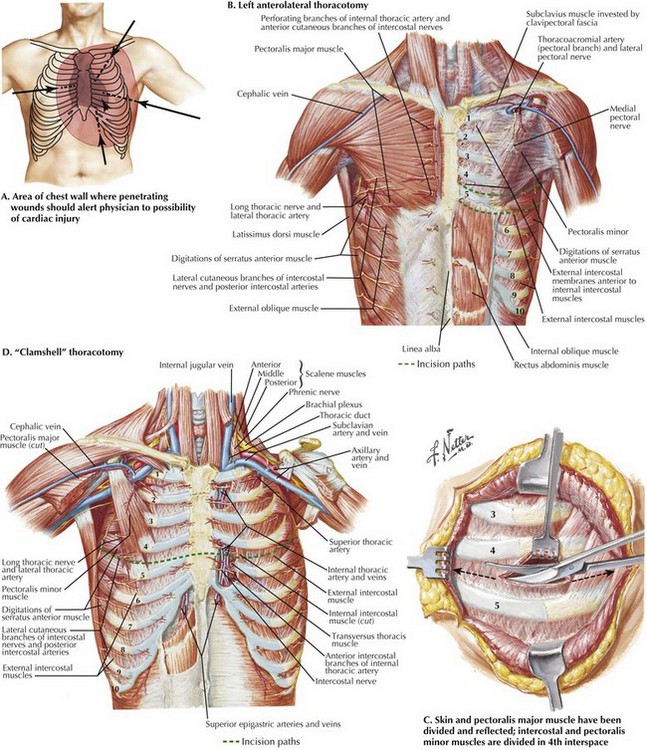Chapter 44 Injury to the thoracic cavity is second only to brain injury as a leading cause of trauma deaths. Most thoracic injuries are managed with nonsurgical therapies. Emergency thoracotomy is a lifesaving procedure only used in select circumstances. Knowledge of the appropriate indications for thoracotomy and thoracic anatomy are paramount. The American College of Surgeons (ACS) Committee on Trauma has summarized indications for use of thoracotomy in the ED as follows (Fig. 44-1, A): The most expeditious entry into the thoracic cavity is through a left anterolateral thoracotomy incision performed in the 4th or 5th intercostal space (Fig. 44-1, B). This incision can be performed easily with a scalpel and then Mayo scissors, if available. A right anterolateral thoracotomy incision does not provide adequate exposure for control of most cardiac injuries but is useful for penetrating injuries to the right chest cavity. The patient should be placed in the supine position with the arms stretched out. If time allows, a wedge should be placed under the left side of the chest, creating an approximately 15-degree tilt for better exposure. The 4th or 5th intercostal space is located just below the nipple in men and, with the breast retracted, at the inframammary fold in women. The incision should extend from the left sternal edge to the midaxillary line. The inferior portion of the pectoralis major and minor, serratus anterior, and intercostal muscles are divided (Fig. 44-1, C). If necessary, the incision can be extended across the sternum to the right midaxillary line as a “clamshell” thoracotomy. Dividing the sternum transversely also will divide the internal mammary arteries, which can lead to troublesome bleeding if they are not ligated (Fig. 44-1, D).
Emergency Thoracotomy for Trauma
Introduction
Surgical Principles
Stay updated, free articles. Join our Telegram channel

Full access? Get Clinical Tree



